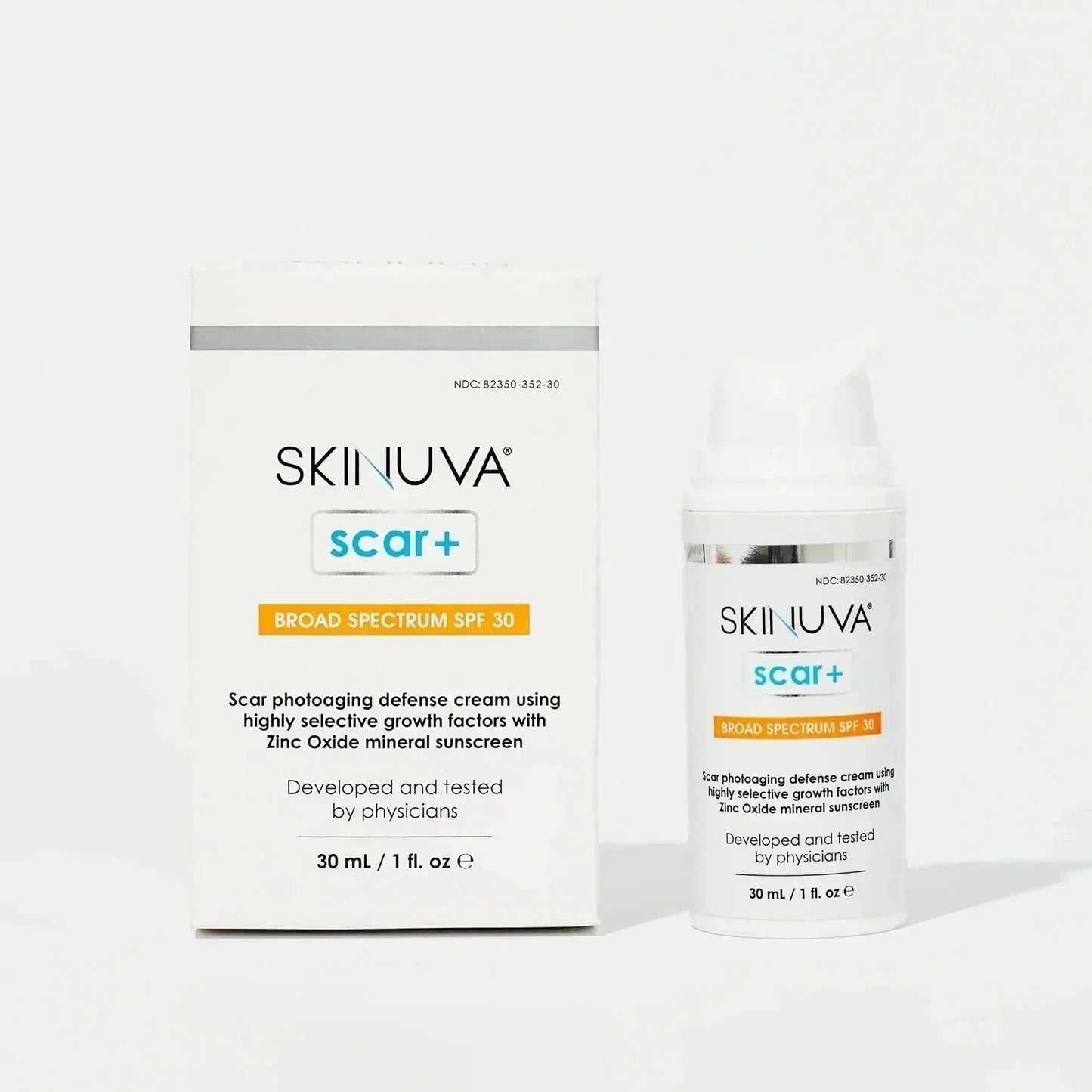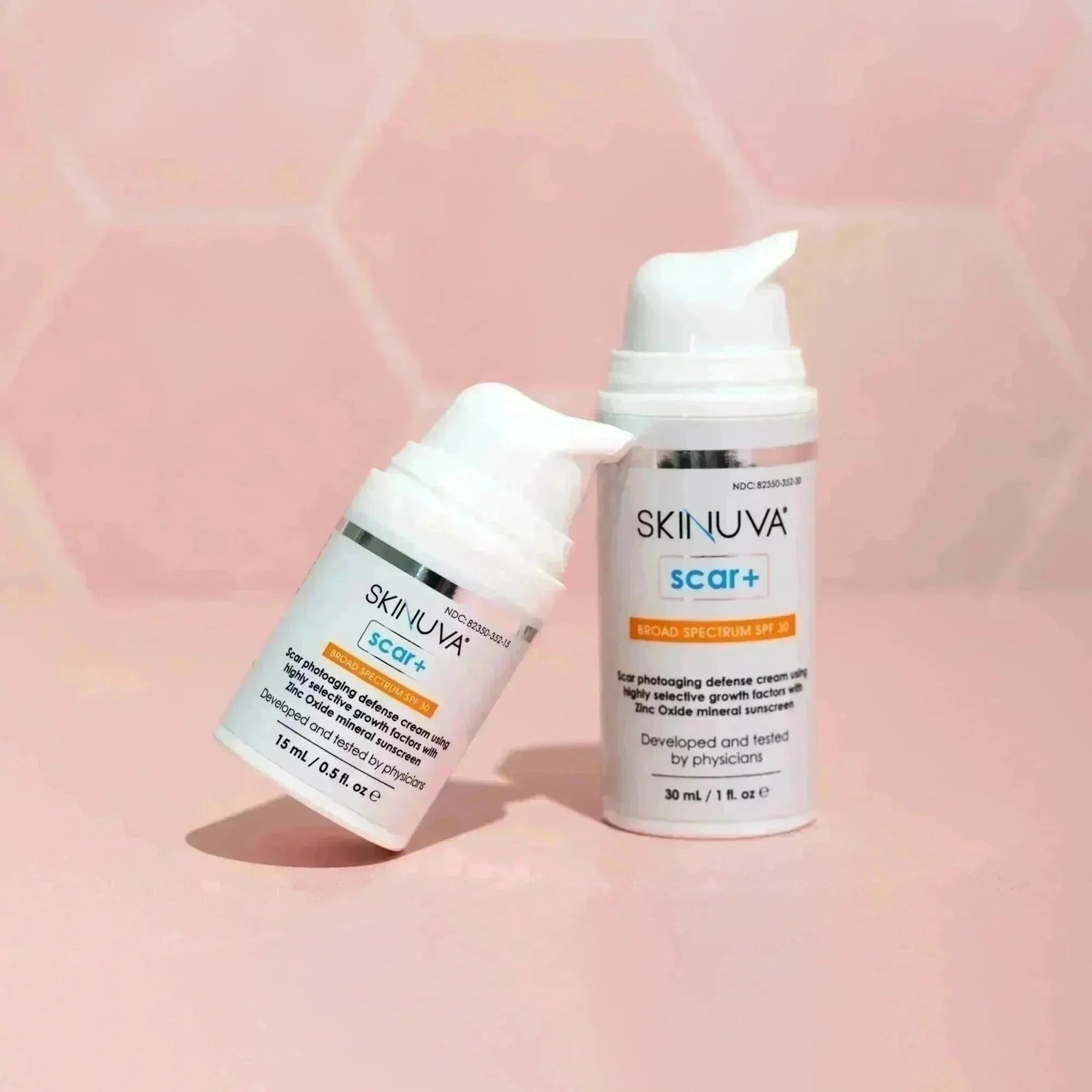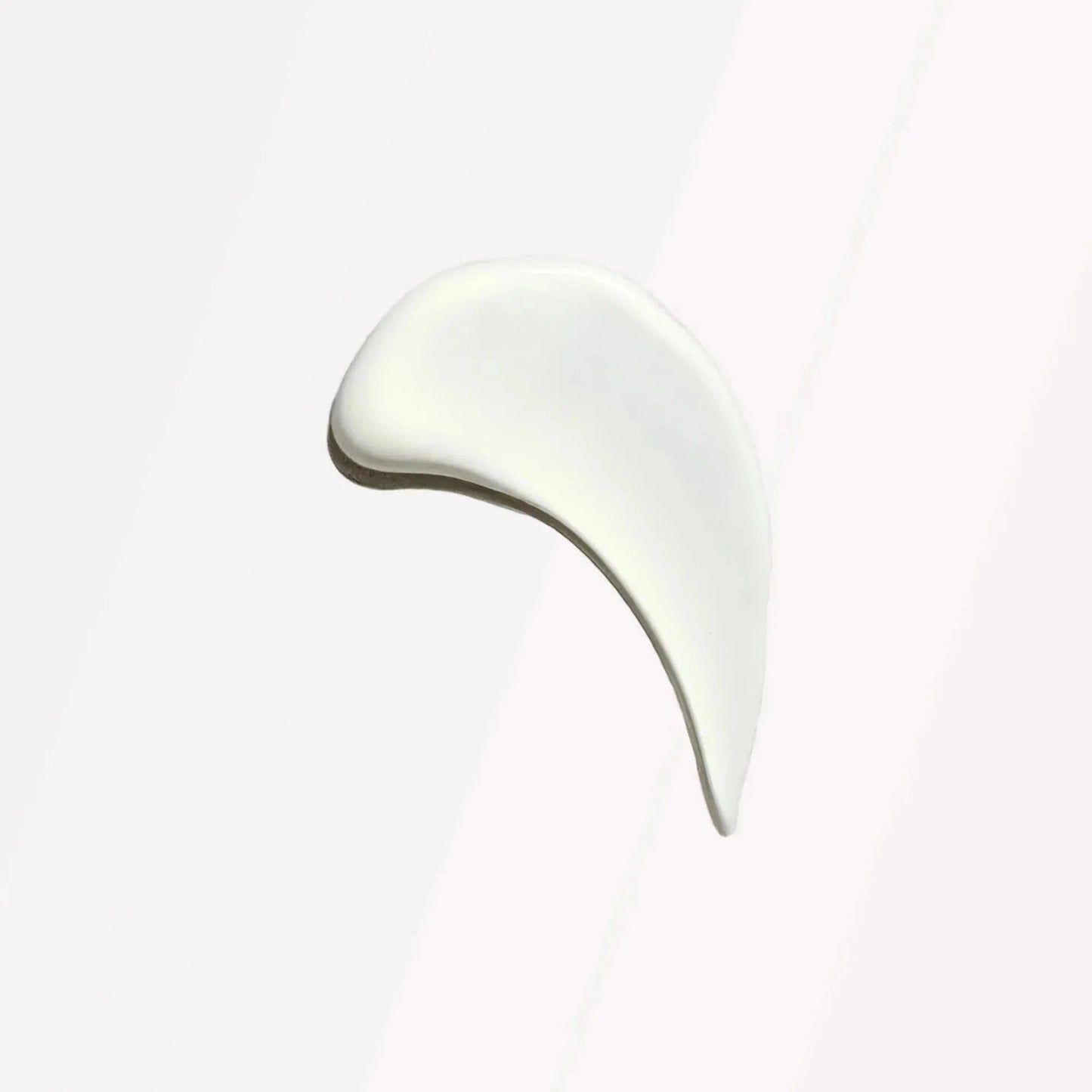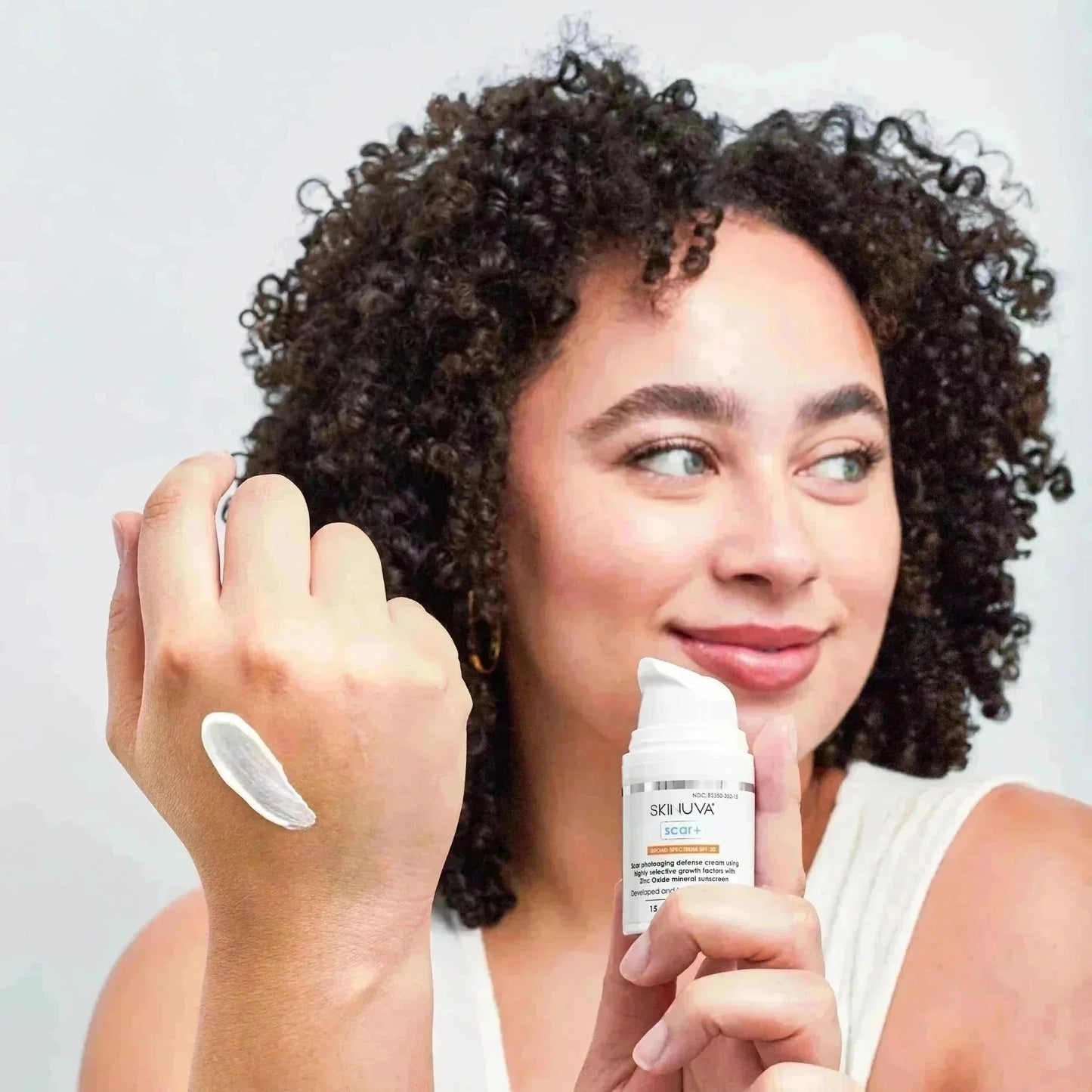Couldn't load pickup availability
Our newest scar cream that contains the same ingredients as the original Skinuva Scar with the added benefit of non-nano Zinc Oxide, offering broad spectrum SPF 30 protection while helping improve the appearance of sun-exposed scars.
Improving your scar starts here:
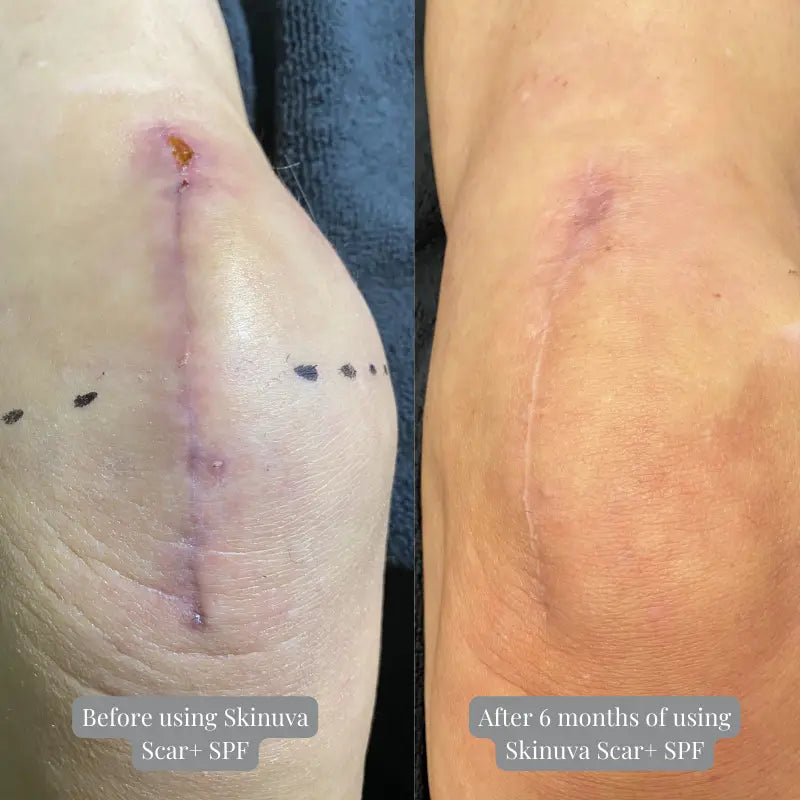
Skinuva Scar+ SPF has all the benefits of the original Skinuva Scar but with added non-nano Zinc Oxide for broad spectrum SPF 30 UVA/UVB protection. Skinuva Scar+ SPF has been specifically formulated for areas exposed to the sun such as the face, neck, and hands to minimize the darkening effects associated with sun exposure and help reduce the appearance of redness and hyperpigmentation.
Skinuva Scar+ SPF helps prevent sunburn in sun-exposed scars. If used as directed with other sun protection measures, Skinuva Scar+ SPF decreases the risk of skin cancer and early skin aging caused by the sun.
Ingredients you'll love

- Synthetic Growth Factors: help reduce the appearance of redness, pigmentation, thickening of the skin; help promote collagen production needed for scarless wound healing.*
- Silicone: creates a barrier on the skin, promotes a hydrated environment for the skin to heal, and creates optimal conditions for Skinuva Scar's other ingredients to help the skin heal.*
- Centella Asiatica: an herbal ingredient well known with numerous publications for its exceptional wound-healing properties.*
- Hyaluronic Acid: used widely in skincare products to help promote hydration as well as healthy cell function and healing.*
- Vitamin C: is known for numerous benefits such as helping to act as a protective antioxidant, reducing hyperpigmentation and promoting collagen production.*
- Aloe Vera: helps create a hydrating environment as well as soothes the skin with its anti-inflammatory properties.*
- Zinc Oxide: acts as a shield from the sun's UVA/UVB rays. Non-nano ingredient, broad spectrum UVA/UVB protection and anti-inflammatory and antimicrobial properties.*
Frequently Asked Questions:
How does physical sunscreen differ from chemical sunscreen?
Physical sunscreens are mineral based (such as Zinc Oxide, found in Skinuva Scar+) and sit on the surface of your skin acting as a shield or reflective barrier on the skin’s surface, protecting the skin from the sun’s rays. Chemical sunscreens partially absorb in the skin and prevent UV damage through a chemical reaction.
How often do I apply Skinuva Scar+ SPF?
To see optimal results, Skinuva Scar+ SPF should be applied twice a day for 3-6 months. It may be used longer for more mature scars. Please follow the instructions for use when going outdoors in direct sunlight. If you are going to be outdoors in direct sunlight, it is recommended to apply Skinuva Scar+ SPF every 2 hours while remaining outdoors.
Can Skinuva Scar+ SPF be used after a laser, microneedling, or chemical peel treatment?
Skinuva Scar has been studied and found to be safe for use after laser procedure, chemical peel, or microneedling. Although there is no reason to believe there would be any issue with the use of Skinuva Scar+ SPF after these same procedures, it has not yet been directly studied and therefore we cannot recommend its use at this time.
Why was Zinc Oxide used in Skinuva Scar+ SPF?
Zinc Oxide is very effective against both UVA and UVB rays, therefore it is a broad-spectrum sunscreen. It’s also very well tolerated on skin and safe for use in everyone, including child-bearing women and children.
Our newest scar cream that contains the same ingredients as the original Skinuva Scar with the added benefit of non-nano Zinc Oxide, offering broad spectrum SPF 30 protection while helping improve the appearance of sun-exposed scars.
It is recommended to use Skinuva Scar+ SPF 2-3 weeks post procedure or when the incision site has closed. For optimal results, Skinuva Scar+ SPF should be used twice a day for 3-6 months. It may be used longer for more mature scars.
Skinuva Scar+ SPF can be used on scars of any age, although it is within the first 12 months of the scar’s healing phase that Skinuva Scar+ SPF provides the most optimal benefits.
Secure Payments
Share
